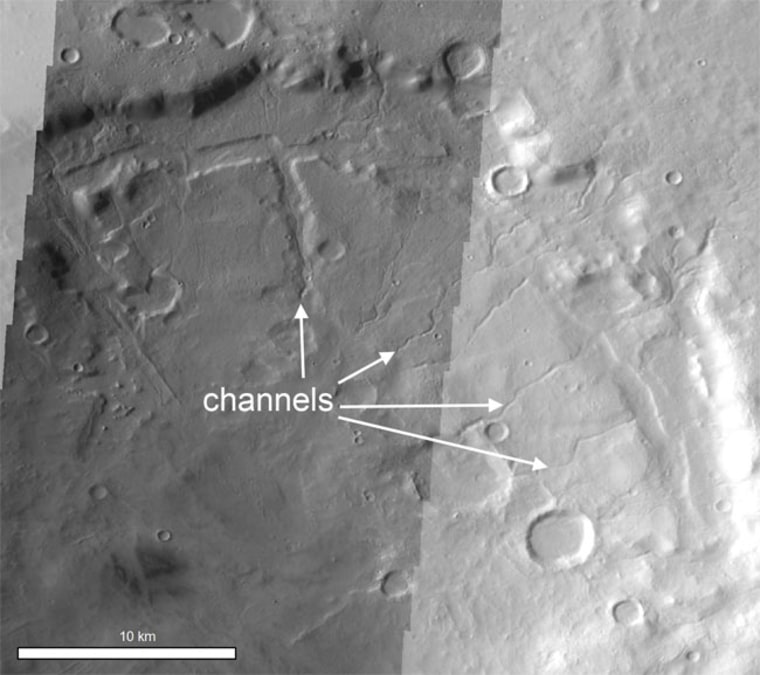Water and ice have left their marks on the Martian surface, from pits and ridges to winding channels and gullies.
Evidence for past water or water ice on Mars has accumulated rapidly in the past decade. A new study, which will be published in the journal Icarus, paints a scientific picture of flowing rivers and glaciers that likely shaped the topography of the planet's large craters.
"If you look at all of these [features] individually, it's not necessarily strong evidence that there was ice and/or water flowing on the surface," said lead researcher Daniel Berman of the Planetary Science Institute in Arizona. "But if you look at this suite of features you see throughout these regions, what you have is a story of the deposition of a fair quantity of ice most likely during this period of high obliquity, several million years ago, which has subsequently begun to melt and flow down the crater walls and across their floors."
Berman and his colleagues analyzed images of about 100 craters in Mars' Arabia Terra region of the northern hemisphere and about 100 more in an area east of Hellas Basin in the southern hemisphere.
The craters are all greater than about 12.5 miles (20 km) in diameter and had been photographed by cameras on various spacecraft, including the Mars Odyssey THEMIS VIS camera, the Mars Global Surveyor Mars Orbiter Camera and the Viking Orbiter cameras.
Here are some of the surface features found by these instruments and that scientists think formed as a result of flowing water and ice:
Lobate flows — Tongue-shaped deposits that resemble rock glaciers on Earth showed up in images of 30 craters in the Hellas Basin. And the ice that caused the lobes could be still flowing. "We can see on the surface [of the lobes] these lineated grooves, lines going in the direction of the flow, and also these pits, which indicate ice is currently flowing and evaporating from the surface," Berman told SPACE.com, explaining how the ice would sublimate directly from a solid to a vapor.
In craters in both regions, Berman found narrow channels about 3 to 7 feet (1 to 2 meters) across that meandered down crater walls and sometimes beyond the craters. "They are really narrow, branching channels, which is usually indicative of the flow of water," Berman said. Crater-wall valleys — Troughs up to about a half mile (1 km) wide were etched into the crater walls in both Martian regions. Some of the valleys were filled with rough-textured deposits of material, suggesting ice-rich debris is flowing (or was flowing) down the crater walls, Berman said.
Sun factor
The scientists also found the landscape features were more common on either the pole-facing wall or equator-facing wall depending on where the crater was located. So, for instance, in the southern hemisphere (Hellas Basin region) there was a sort of line of demarcation. North of this imaginary line, more of the features showed up on the crater walls facing the south, while south of the line most features were found on crater walls facing the equator.
This pattern would suggest uneven heating of crater walls. So ice on the walls that got more sunlight would melt faster, causing more water and/or ice to flow and form the gullies and other features.
Unlike Earth, with an axis that only oscillates through an arc of about 4 degrees over millions of years, Mars seems to have an axis that tilts between vertical and as much as 60 degrees, according to recent studies.
"This is proving [these features] happened when the planet was tilted much more than it is now," Berman said. "And that means these deposits were initially formed during this period of higher tilt, which happened several million years ago."
Berman and his colleagues have estimated the ages of some of these crater features using a technique known as crater counting, finding they range from 1 million to 10 million years old --relatively young, geologically speaking.
